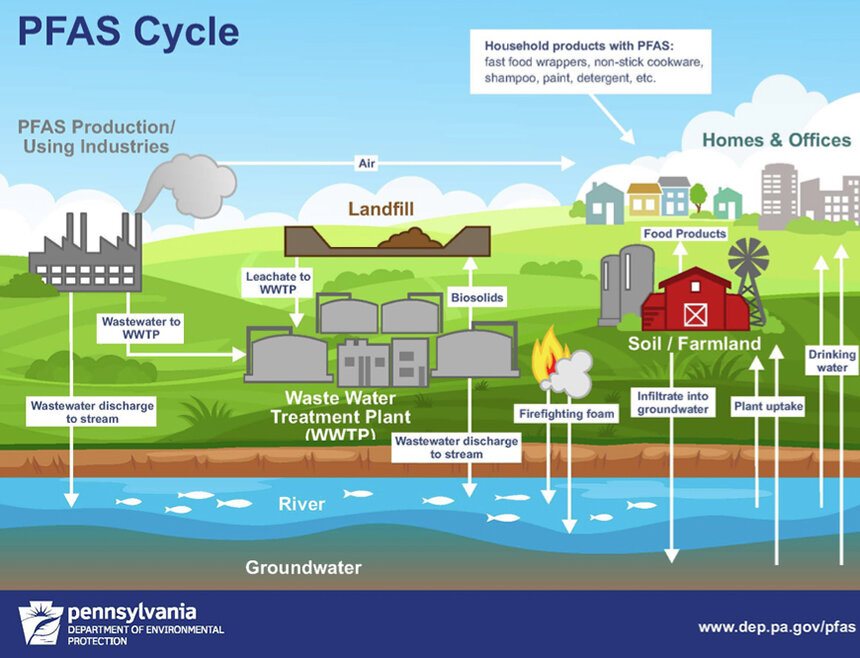Watershed Plan to Address Aquidneck Island’s Water Problems
November 13, 2020
Aquidneck Island’s watershed is precious, with the three municipalities relying on the various waterways for recreation, ecological benefits, and potable water. The island’s waters, however, are stressed.
But, according to Jennifer Paquet, a senior environmental planner with the Rhode Island Department of Environmental Management’s Office of Water Resources, all seven of the supply source reservoirs on the island — not including the sole reservoirs in Tiverton and Little Compton — show degraded water quality, with excess phosphorous and algae blooms being consistent problems. These impaired waters are: the North and South Easton ponds (Middletown and Newport), Gardiner Pond (Middletown), Nelson Paradise Pond (Middletown), St. Mary’s Pond (Portsmouth), Sisson Pond (Portsmouth), and the Lawton Valley Reservoir (Portsmouth).

The water coming of the Newport Water System’s 15,000 or so service connections is safe to drink — thanks to investments in new and upgraded water-treatment facilities — but is polluted at its sources. Officials have been dealing with this problem for more than five years.
“All of the drinking water reservoirs are impaired for their uses as fish and wildlife habitat and public drinking water supply, and this is due to excess nutrients, phosphorous and organic carbon,” Paquet said during a Nov. 10 online Land to Sea Speakers Series talk hosted by Middletown-based Clean Ocean Access.
As a way to consolidate this information, better understand the watershed, and as a requirement to apply for any Environmental Protection Agency grant money to improve watershed conditions, Paquet is completing a watershed plan for the Aquidneck Island. She expects to have the plan ready by the end of this year.
“Watershed planning is based on a framework that recognizes the watershed as the appropriate unit for managing our water resources,” she said. “What happens upstream affects downstream … and what happens on the land can affect the water, the groundwater, and the aquatic habitats. So, watershed planning is a way of looking at all of those connections.”
The creation of watershed plans for various municipalities is also a goal of the state’s Water 2030 plan, which calls out Aquidneck Island specifically for its “shallow reservoirs with developed watersheds and raw water that is challenging to treat.”
Those facts are partially what made the island’s watershed a priority for Paquet and her team.
“Aquidneck Island is one of our priorities because of the importance of the drinking water supply and the beaches, which provide public recreation, and a lot of other resources,” she said. “And also, because a lot of energy, time, and investment has already been spent on this watershed working to help improve it by all parties, from state, municipalities, and other organizations.”
Some of these efforts include the Island Waters Project, which was created in 2016 by the Aquidneck Island Planning Commission to help the three island communities work together to better manage stormwater pollution.
“With a single, shared drinking water system, Aquidneck Island is uniquely vulnerable to water pollution caused by stormwater runoff. As a world-class destination for beach-going, sailing, fishing and other forms of water-based recreation, our quality of life, our economy and our environment depend on clean fresh and salt water,” according to the Aquidneck Island Planning Commission.
This past spring, the Island Waters program started work on two projects: a wet vegetated treatment system near Sisson Pond and a best-management practice at Hoogendoorn Nurseries in Middletown with the hope of restoring the water quality of Maidford River and Paradise Brook.
Paquet also mentioned the ultraviolet treatment facility, a $6 million project by the city of Newport built with the goal of reducing stormwater contamination that was leading to the frequent closure of Easton’s Beach. The UV treatment facility began operating in May 2011.
It’s Paquet’s — and the state’s — hope that by creating an Aquidneck Island Watershed Plan all of the information about work that’s been done and that needs to be done will be accessible in one comprehensive document that can help the various municipalities plot their course forward in the quest for healthy waterways.
“The watershed plan will talk about what can be done and what is being done,” Paquet said.



